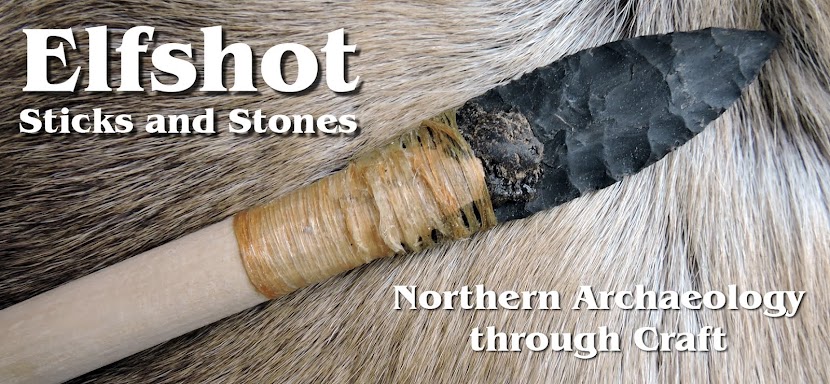 |
| Killer Whale Effigy in The Rooms, St. John's |
Whales of all shapes and sizes are common in the waters around Newfoundland, but over the past several weeks its the Orcas that are making the news. There have been at least three separate incidents of orcas hunting and feeding on minke whales captured on film.
CBC: Orcas hunt minke whale off Newfoundland coast
CBC: Orcas kill minke whale in Trinity Bay
CBC: More video of orcas killing a whale
There are some pretty amazing moments in the videos, although the Department of Fisheries and Oceans has been reminding people to give the pods some space while they are hunting, and not pursue them in boats in search of a good video.
 |
| Killer Whale Effigy from Port au Choix |
People living in Newfoundland have a long history with whales and whale effigies show up in archaeological sites, from time to time. The killer whale effigy from the Maritime Archaic Indian cemetery at Port au Choix is one of the most iconic artifacts to come from this province. It dates from 4400-3300 years ago and is carved from stone. Its believed to be a killer whale because of the prominent dorsal fin - no other whale in the waters around Newfoundland have such pronounced dorsal fins. You can see how the mouth of the animal was incised on the carving. There is at least one other stone whale from the site, although its a little smaller and not so well made.
Much more recently, Shanawdithit, the last known Beothuk showed us what a Beothuk whale effigy looked like. Although we don't have a physical example of the piece, Shanawdithit illustrated a series of six "
Totems? or Emblems of Mythology" belonging to the Beothuk. These six pieces were 6 foot long staffs, covered in red ochre and each mounted with a different figure. One of these figures was a whale tail, and in the notes on the drawing it is named and identified as "ow-as-posh-no-un? Emblematic of the Whales tail, considered the greatest prize by the hunter."
 |
| Shanawdithit's drawings of Beothuk staffs - the second from the left is a whale tail |
 |
| Whale Effigy from North Cove, Newfoundland |
There's a third intriguing example of potential whale art in Newfoundland archaeology that comes from North Cove, near Bird Cove on the Northern Peninsula. Its a chipped stone triangle of rock that doesn't appear to be a functional tool of any kind. Its not typical of any known tool type from the province. Its from a Recent Indian context and the site dates between 1200-1000 BP. Steve Hull, the archaeologist who researched the site for his M.A. at MUN, believes it could be a whale effigy and I think he's probably correct. Although I can't quite decide whether its a body and dorsal fin like the Port au Choix effigy or if one of the three points could be hafted in a staff as a whale tail, like the staff drawn by Shanawdithit.
 |
| Maritime Archaic Indian Killer Whale |
Curiously, all three of these examples come from Indian contexts, as opposed to Palaeoeskimo sites. Of the two groups (Indians and Palaeoeskimos), the Palaeoeskimos are better known for their artwork, but whales don't tend to show up in their carvings or amulets. On the other hand, the Indian groups in Newfoundland seem to have put some importance in the animals and their form for thousands of years.
Photo Credits:
1,6: Tim Rast
2: Jim Tuck, from
The Newfoundland and Labrador Heritage Website
3:
Drawing by Shanawdithit
4: Steve Hull
5: Steve Hull (I drew the smiley face and staff on Steve's Photo)







Best blog ever - I may be somewhat biased
ReplyDelete